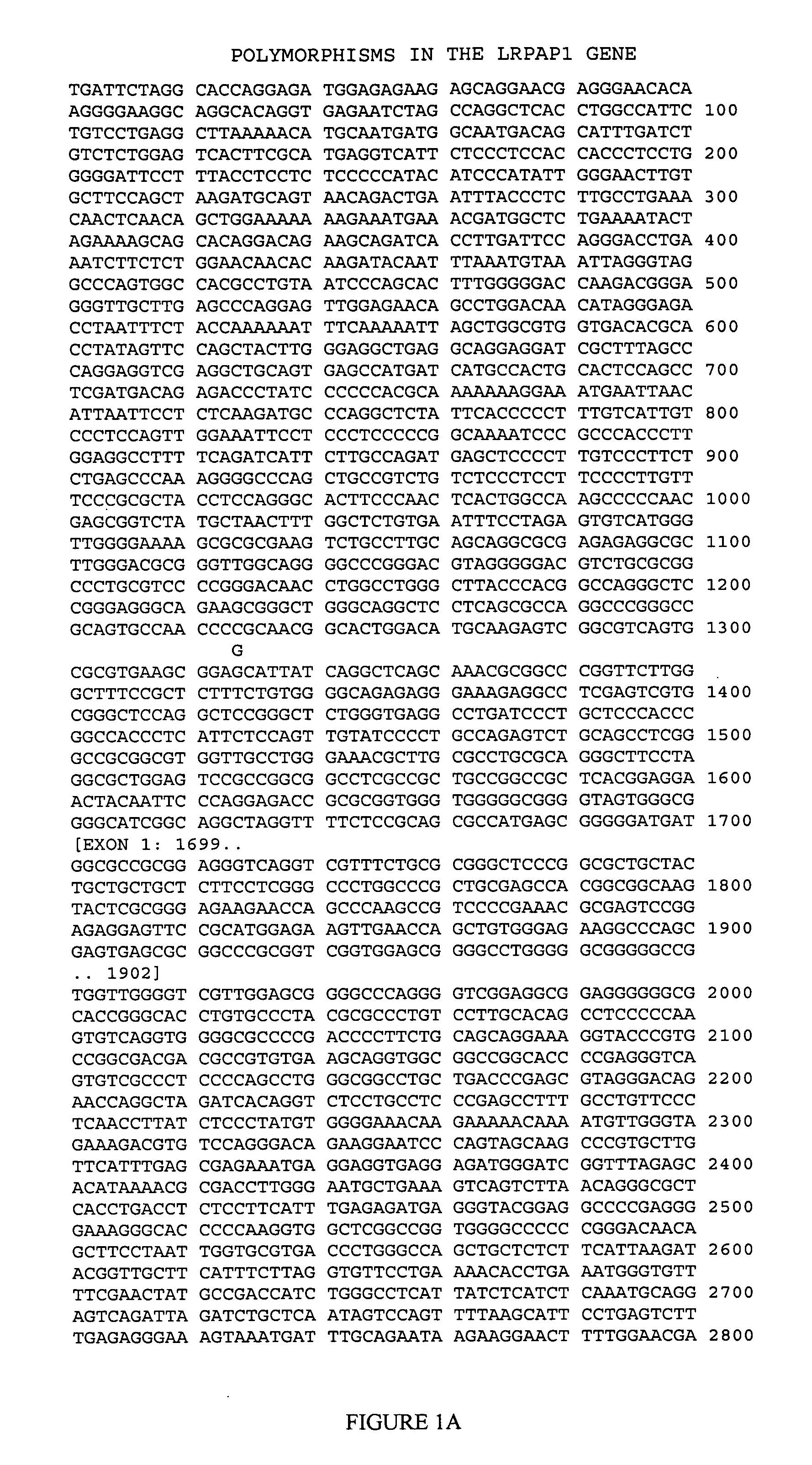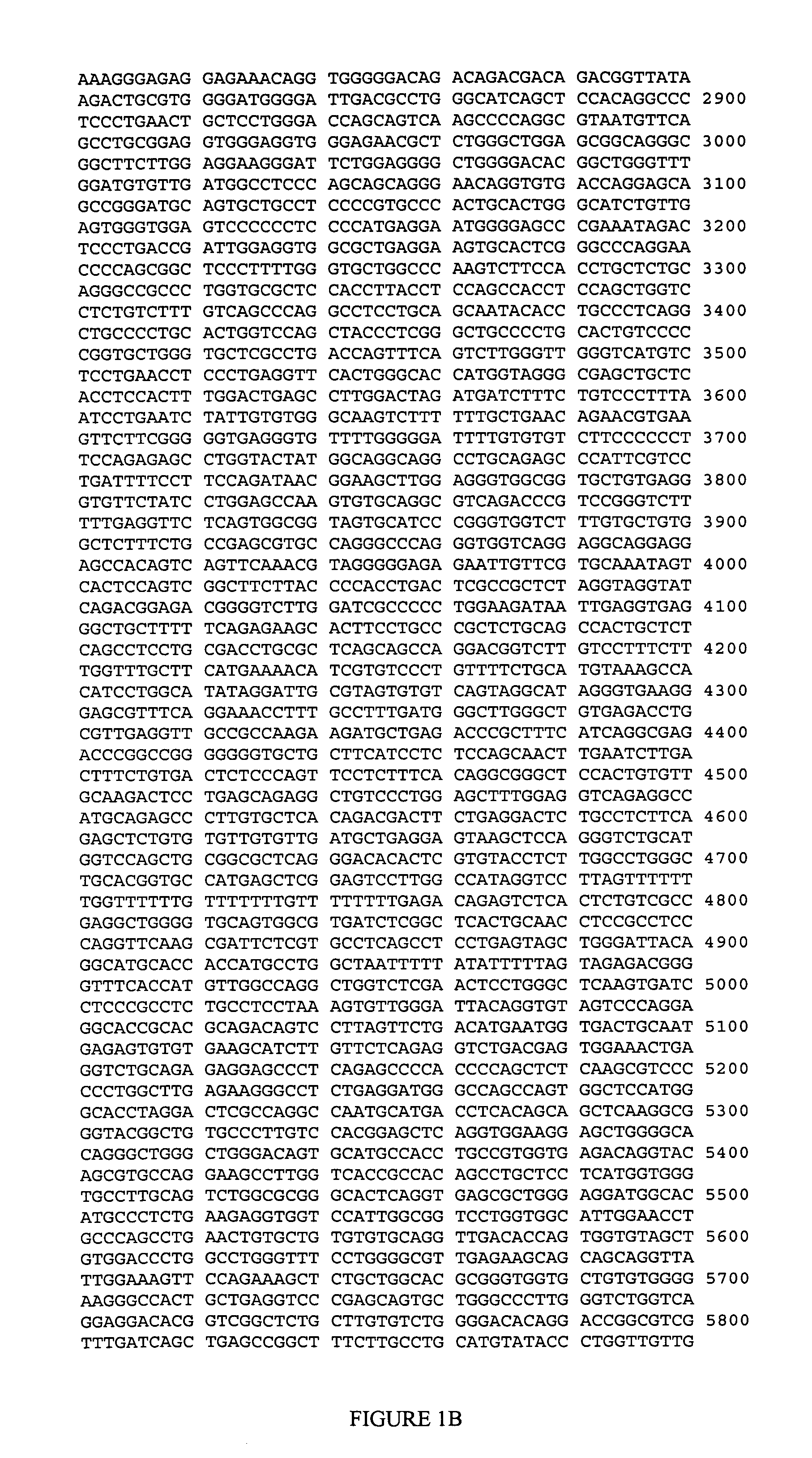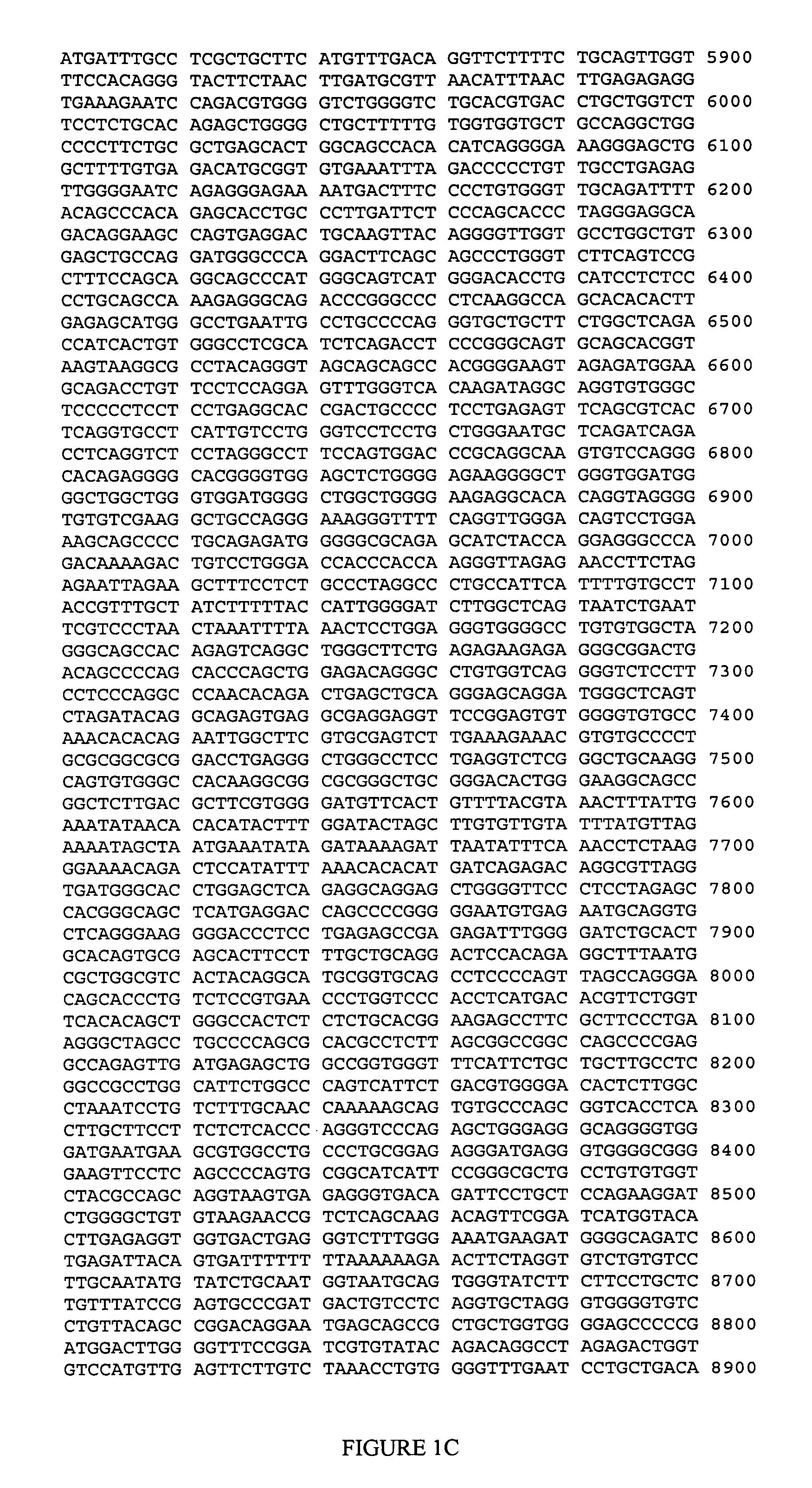LRPAP1 genetic markers associated with galantamine
a technology of genetic markers and galantamine, applied in the field of gene expression and pharmacogenetics, can solve the problems of inability to identify patients at risk for reduced or lack of efficacy of galantamine therapy, risk of side effects, and inability to consider in vivo activity clinically relevant, and achieve the effect of improving cognitive function
- Summary
- Abstract
- Description
- Claims
- Application Information
AI Technical Summary
Benefits of technology
Problems solved by technology
Method used
Image
Examples
example 1
[0126] This example illustrates the clinical and biochemical characterization of selected individuals in a cohort of 449 Caucasian patients diagnosed with Alzheimer's Disease.
[0127] The patient cohort was selected from patients participating in three clinical trials of galantamine held internationally and in the United States (GAL-INT2, GAL-USA 10, and GAL-INT-1) (Rockwood et al., supra; Tariot et al., supra; Wilcock et al., supra), and a fourth clinical trial with a similar disease population. In brief, the galantamine trials were carried out by delivering to patients galantamine at daily dosages of 8 mg, 16 mg, 24 mg, or 32 mg depending on the trial. Following 3, 5, 6 or 12 months of treatment in the GAL-INT2, GAL-USA 10, GAL-INT-1 and SAB-USA-25 trials, respectively, the severity of symptoms in patients were evaluated using the cognitive subscale of the Alzheimer's Disease Assessment Scale (ADAS-cog) (Rosen et al., supra; Rockwood et al., supra; Tariot et al., supra; Wilcock et ...
example 2
[0130] This example illustrates genotyping of the patient cohort for the nine LRPAP1 polymorphic sites selected by the inventors herein for analysis.
[0131] Genomic DNA samples were isolated from blood samples obtained from each member of the cohort and genotyped at each of PS1-PS9 (Table 2) using the MassARRAY technology licensed from Sequenom (San Diego, Calif.). In brief, this genotyping technology involves performing a homogeneous MassEXTEND assay (hME), in which an initial polymerase chain reaction is followed by an allele-specific oligonucleotide extension reaction in the same tube or plate well, and then detecting the extended oligonucleotide by MALDI-TOF mass spectrometry.
[0132] For each of the nine LRPAP1 polymorphic sites of interest, a genomic DNA sample was amplified in a 8.0 μL multiplexed PCR reaction consisting of 2.5 ng genomic DNA (0.3 ng / μL), 0.85 μL 10×reaction buffer, 0.32 units Taq Polymerase, up to five sets of 0.4 pmol each of forward PCR primer (5′ to 3′) an...
example 3
[0137] This example illustrates the deduction of haplotypes from the LRPAP1 genotyping data generated in Example 2.
[0138] Haplotypes were estimated from the unphased genotypes using a computer-implemented algorithm for assigning haplotypes to unrelated individuals in a population sample, essentially as described in WO 01 / 80156 (Genaissance Pharmaceuticals, Inc., New Haven, Conn.). In this method, haplotypes are assigned directly from individuals who are homozygous at all sites or heterozygous at no more than one of the variable sites. This list of haplotypes is then used to deconvolute the unphased genotypes in the remaining (multiply heterozygous) individuals.
[0139] A quality control analysis was performed on the deduced haplotypes, which included analysis of the frequencies of the haplotypes and individual SNPs therein for compliance with principles of Hardy-Weinberg equilibrium.
PUM
| Property | Measurement | Unit |
|---|---|---|
| Color | aaaaa | aaaaa |
| Linkage disequilibrium | aaaaa | aaaaa |
| Disorder | aaaaa | aaaaa |
Abstract
Description
Claims
Application Information
 Login to View More
Login to View More - R&D
- Intellectual Property
- Life Sciences
- Materials
- Tech Scout
- Unparalleled Data Quality
- Higher Quality Content
- 60% Fewer Hallucinations
Browse by: Latest US Patents, China's latest patents, Technical Efficacy Thesaurus, Application Domain, Technology Topic, Popular Technical Reports.
© 2025 PatSnap. All rights reserved.Legal|Privacy policy|Modern Slavery Act Transparency Statement|Sitemap|About US| Contact US: help@patsnap.com



